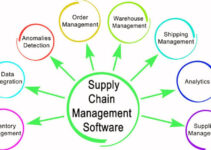The supply chain is the network of various partners and stakeholders like retailers, distributors, manufacturers, and suppliers. They collaborate with one another to perform the function of purchasing raw supplies, transforming raw materials, developing finished products, and delivering them to customers. Today, we’ll discuss the fishing supply chain; its structure, and activities involved in the fishing SCM process.
Fish is a temperature-sensitive and perishable item and its quality would deteriorate over time. There is a vast distance between the production and consumption areas. You can increase the production of fish by employing modern and scientific methods of fishing and fish culture.
Fishing is a full-time profession for many fish farmers and fishermen; many do it part-time. The distribution structure and system play a key role in the fish production system in the industry. However, the distribution channel comprises of a network of processes from the fisherman to the end consumers. The distribution system usually sets the price of the fish.
Structure of the Fishing Supply Chain
Some of the main drivers involved in the structure of the fishing supply chain and they’re as follows;
Inventory
The inventory comprises of finished goods, work-in-progress, or raw supplies within the supply chain network and process.
Facilities
Facilities are the places where you assemble and store inventory; they could be storage sites, production, and fabricated sites.
Transportation
It is the medium that allows you to move goods and inventory from one point to another in the supply chain network. It comprises the integration of transportation routes and modes.
Information
Information outlines information and data relevant to facilities, transportation, and inventory in the supply chain network and process.
Sourcing
The function and role of sourcing is to perform the function of outsourcing.
Pricing
It is the price of the products and goods that the company offers in the supply chain network and process.
Activities Involved in the Fishing Supply Chain Process
Fish market is the place where you buy and sell fish. The market remains operational and open only for a few hours where the traders trade fish; usually from 3 AM to 9 AM. However, the fish market is completely different from the other markets. They trade the fish in the open place without any stall or preservation system. Some of the main activities involved in the fishing supply chain process are as follows;
Fish Catching
Fish catching depends on various factors like market conditions, quota, experience, boats, weather, and fishing season. If you collect and gather all the data and information and include it in the catching plan, then it allows you to make the right decision.
Packaging
Retailers, fish farmers, and packers employ polythene, rope, sacks, plastic, boxes, drums, and bamboo for the packaging of fish. Many use plastic drums for the transportation of fish; they also employ wooden, plastic, and steel boxes for distribution.
Grading
Grading is the method of categorization and classification of goods based on specific measures and procedures. You can categorize and grade fish based on the weight and size; species of fish and location of the fish also play a key role in pricing. Usually, they sell the small-sized fish by weight or some other measuring unit.
Transport, Handling, & Landing
The function of transportation is to ensure the availability of the product in a particular place. It ensures that you should move the perishable goods from the production facility to the end consumers. The transportation medium would define the hygiene and purity of the fish; its value would decrease if it takes a lot of time to transfer fish from one point to the market.
Cold Storage & Ice Supply
Fish have a very perishable nature, and they require specialized storage units depending on the seasonal demand. Many fish transporters employ crushed ice during the peak season; the deficiency of ice would impact the pricing. However, the reason they employ preservative chemicals is due to the improper cold storage system.
Pricing & Value Addition
Two main factors impact the pricing of the fish; the price at which the wholesalers buy the fish and the amount of profit they plan to earn on it. Value addition is when the product passes through in different channels and intermediaries to approach the end consumers. Different types of costs are involved in the following;
- Government taxes
- Wastage
- Tip donations
- Personal expenses
- Telephone bills
- Storage cost
- Informer’s charges
- Commission
- Wages
- Icing
- Packaging
- Transportation
Storage
The main role of storage is to make the fish available at the right time when you need or desire it. It allows traders to earn higher prices for their products when you offer them at a higher quality.
Conclusion: Fishing Supply Chain
After an in-depth study of the fishing supply chain; we have realized that fishing is the world’s leading trading commodity. If you are learning about the activities involved in the fishing supply chain process, then you should keep in mind the abovementioned elements and structure.
Ahsan is an accomplished researcher and has a deep insight in worldly life affairs. He goes Live 3 days a week on various social media platforms. Other than research writing, he’s a very interesting person.


